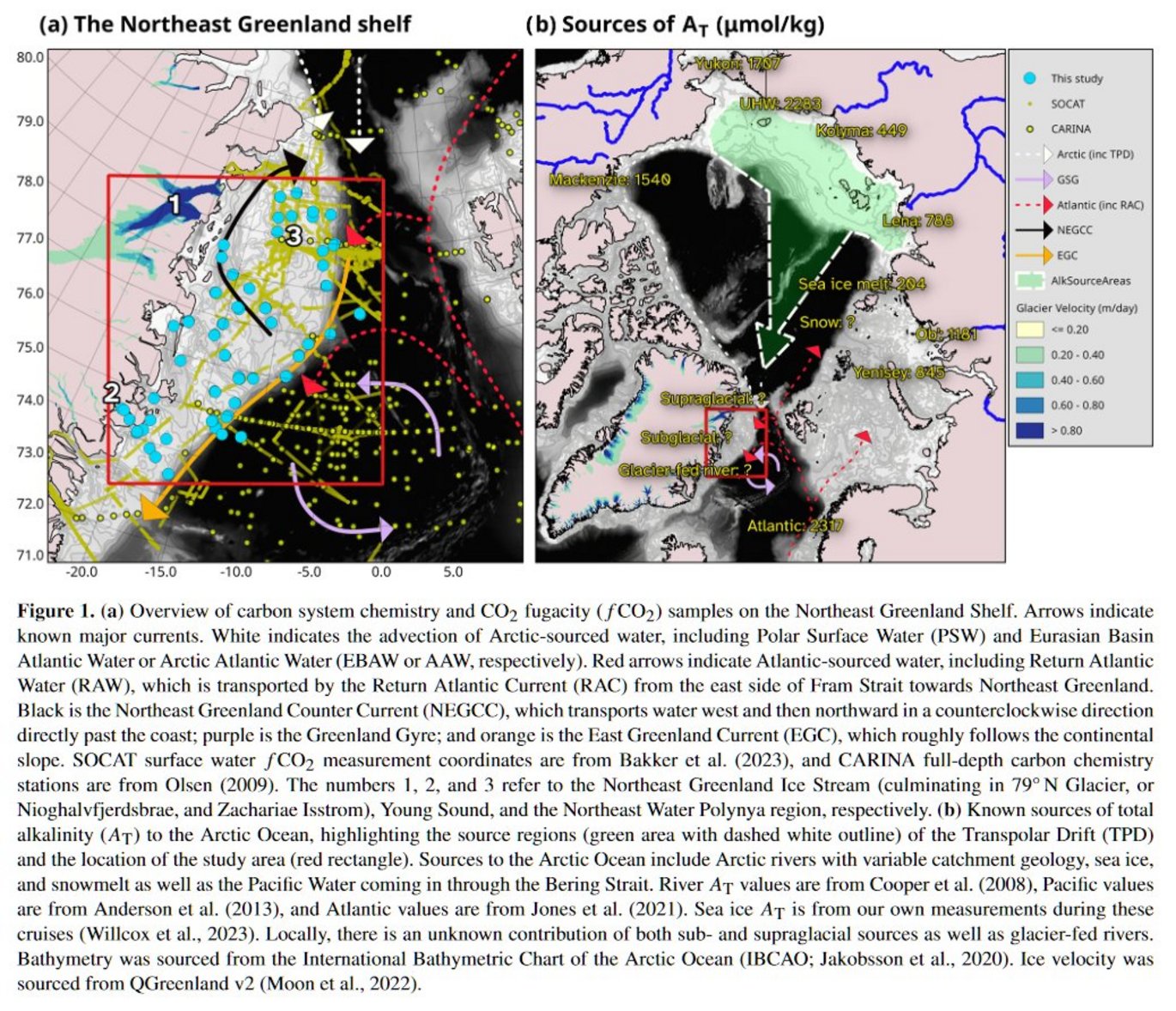The Northeast Greenland Shelf as a potential late-summer CO2 source to the atmosphere
New publication by Esdoorn Willcox, Marcos Lemes, Thomas Juul-Pedersen, Mikael Kristian Sejr, Johnna Marchiano Holding, and Søren Rysgaard

Abstract:
Abstract. The Northeast Greenland Shelf is a region currently considered to be an annual net sink of carbon dioxide (CO2) from the atmosphere. Water from the Northeast Greenland Shelf is advected to the formation regions of North Atlantic Deep Water; therefore, any carbon stored in the region may be retained in the global oceans on the timescales of the thermohaline circulation. We present the most extensive study of carbon chemistry on the Northeast Greenland Shelf to date, made possible by opportunistic sampling due to a sudden decrease in the sea ice concentration in late-August and September 2017. These are the first fulldepth measurements of total alkalinity and dissolved inorganic carbon at latitudes between 75 and 79° N, with additional data collected in the region of the Northeast Water Polynya and outside of Young Sound. We find that surface mixed-layer concentrations are variable and (for many stations) higher than the interpolated atmospheric concentration for the region during the sampling period. Below the surface mixed layer, CO2 concentrations increase linearly with decreasing apparent oxygen utilisation. The mixed layer deepens during the study period; this is associated with apparent changes in CO2 uptake. The Northeast Greenland Shelf is a hydrologically complex region with many processes influencing the carbonate system at smaller scales than our sampling density. The scatter in the dataset represents more than mere outliers, and the lack of relationship between the outliers and any measured variable indicates a strong influence of a currently undescribed (set of) variable(s) and/or process(es) at the sampled scales. These data were collected during a time of radically low sea ice concentrations for the region and may be an indication of future conditions. As they indicate the potential of the region to act as a seasonal source of CO2 to the atmosphere, this may modify our current estimate of the region as a strong annual net sink that is relatively protected from the immediate influence of atmospheric warming and climate change.
